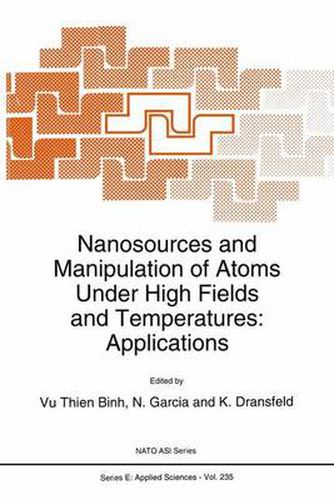Readings Newsletter
Become a Readings Member to make your shopping experience even easier.
Sign in or sign up for free!
You’re not far away from qualifying for FREE standard shipping within Australia
You’ve qualified for FREE standard shipping within Australia
The cart is loading…






This title is printed to order. This book may have been self-published. If so, we cannot guarantee the quality of the content. In the main most books will have gone through the editing process however some may not. We therefore suggest that you be aware of this before ordering this book. If in doubt check either the author or publisher’s details as we are unable to accept any returns unless they are faulty. Please contact us if you have any questions.
This volume contains the proceedings of the NATO-Advanced Research Workshop (ARW) Manipulation of atoms under high fields and temperatures: Applications , sponsored by the NATO Scientific Affairs Division, Special Programme on Nanoscale Science. This ARW took place in Summer ‘92, in the pleasant surroundings of the Hotel des Thermes at Charbonnieres les Bains -Lyon, France. Gathering some fifty experts from different fields, the ARW provided an opportunity to review the basic principles and to highlight the progress made during the last few years on the nanosources and the interactions between atomic-scale probes and samples. The motivation is to use the novel properties attached to the atomic dimensions to develop nanoscale technologies. The perception of the atomic-scale world has greatly changed since the discovery and development, in the early 80’s, of Scanning Tunneling Microscopy (STM) by Binnig and Rohrer. Beyond the observation of individual atoms, which is now routine, the concept of playing with atoms has become commonplace. This has lead to the fashioning of tools at the atomic scale, to the deposition, the displacement and the creation of atomic structures and also to the knowledge of interactions and contacts between atoms. Nanotips ending with a single atom are sources of ultra-fine charged beams. They can be unique tools for high resolution observations, for micro fabrications by micro-machining and deposition at a scale not previously attainable, with a working distance less stringent than with STM devices.
$9.00 standard shipping within Australia
FREE standard shipping within Australia for orders over $100.00
Express & International shipping calculated at checkout
This title is printed to order. This book may have been self-published. If so, we cannot guarantee the quality of the content. In the main most books will have gone through the editing process however some may not. We therefore suggest that you be aware of this before ordering this book. If in doubt check either the author or publisher’s details as we are unable to accept any returns unless they are faulty. Please contact us if you have any questions.
This volume contains the proceedings of the NATO-Advanced Research Workshop (ARW) Manipulation of atoms under high fields and temperatures: Applications , sponsored by the NATO Scientific Affairs Division, Special Programme on Nanoscale Science. This ARW took place in Summer ‘92, in the pleasant surroundings of the Hotel des Thermes at Charbonnieres les Bains -Lyon, France. Gathering some fifty experts from different fields, the ARW provided an opportunity to review the basic principles and to highlight the progress made during the last few years on the nanosources and the interactions between atomic-scale probes and samples. The motivation is to use the novel properties attached to the atomic dimensions to develop nanoscale technologies. The perception of the atomic-scale world has greatly changed since the discovery and development, in the early 80’s, of Scanning Tunneling Microscopy (STM) by Binnig and Rohrer. Beyond the observation of individual atoms, which is now routine, the concept of playing with atoms has become commonplace. This has lead to the fashioning of tools at the atomic scale, to the deposition, the displacement and the creation of atomic structures and also to the knowledge of interactions and contacts between atoms. Nanotips ending with a single atom are sources of ultra-fine charged beams. They can be unique tools for high resolution observations, for micro fabrications by micro-machining and deposition at a scale not previously attainable, with a working distance less stringent than with STM devices.